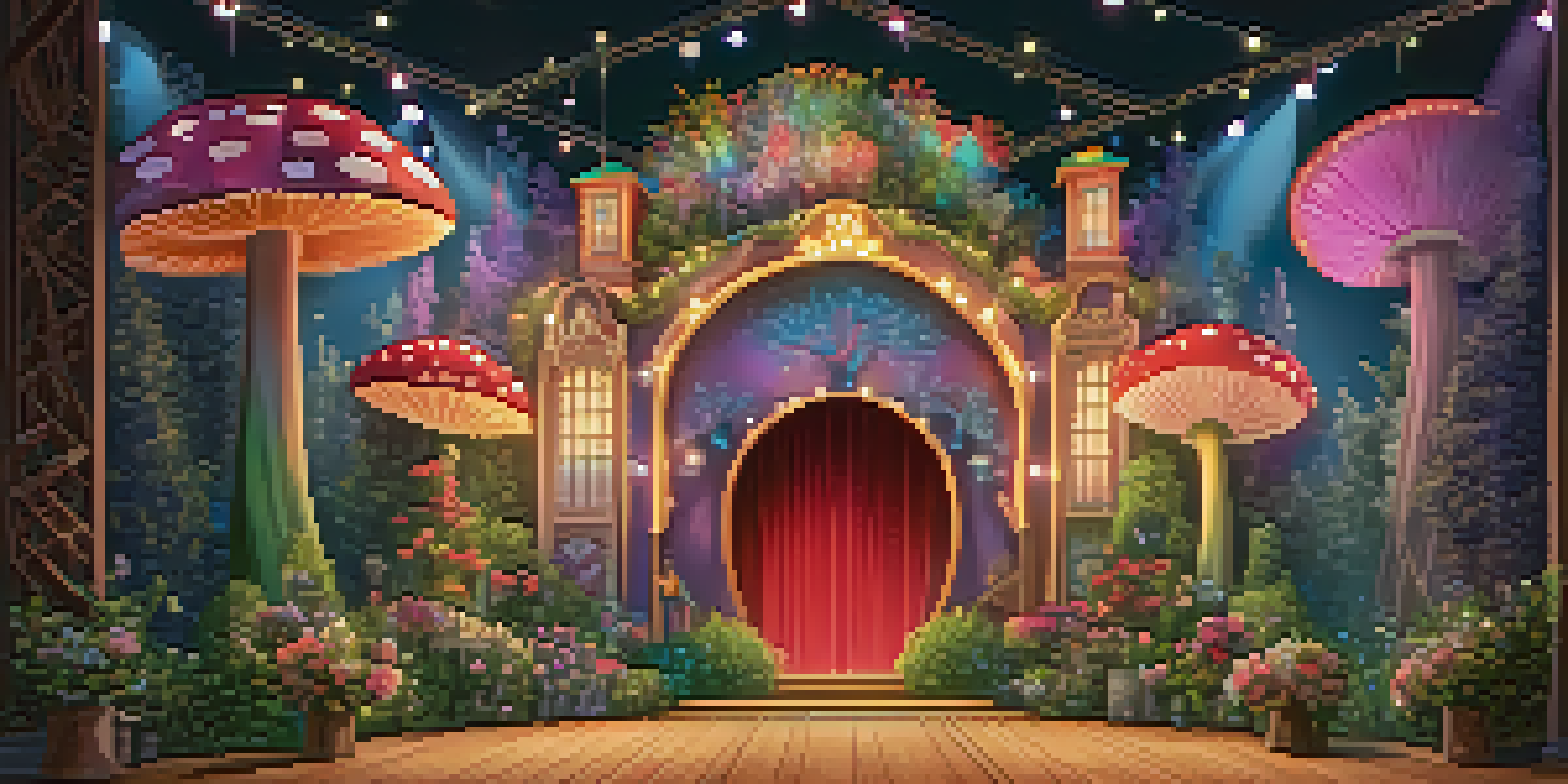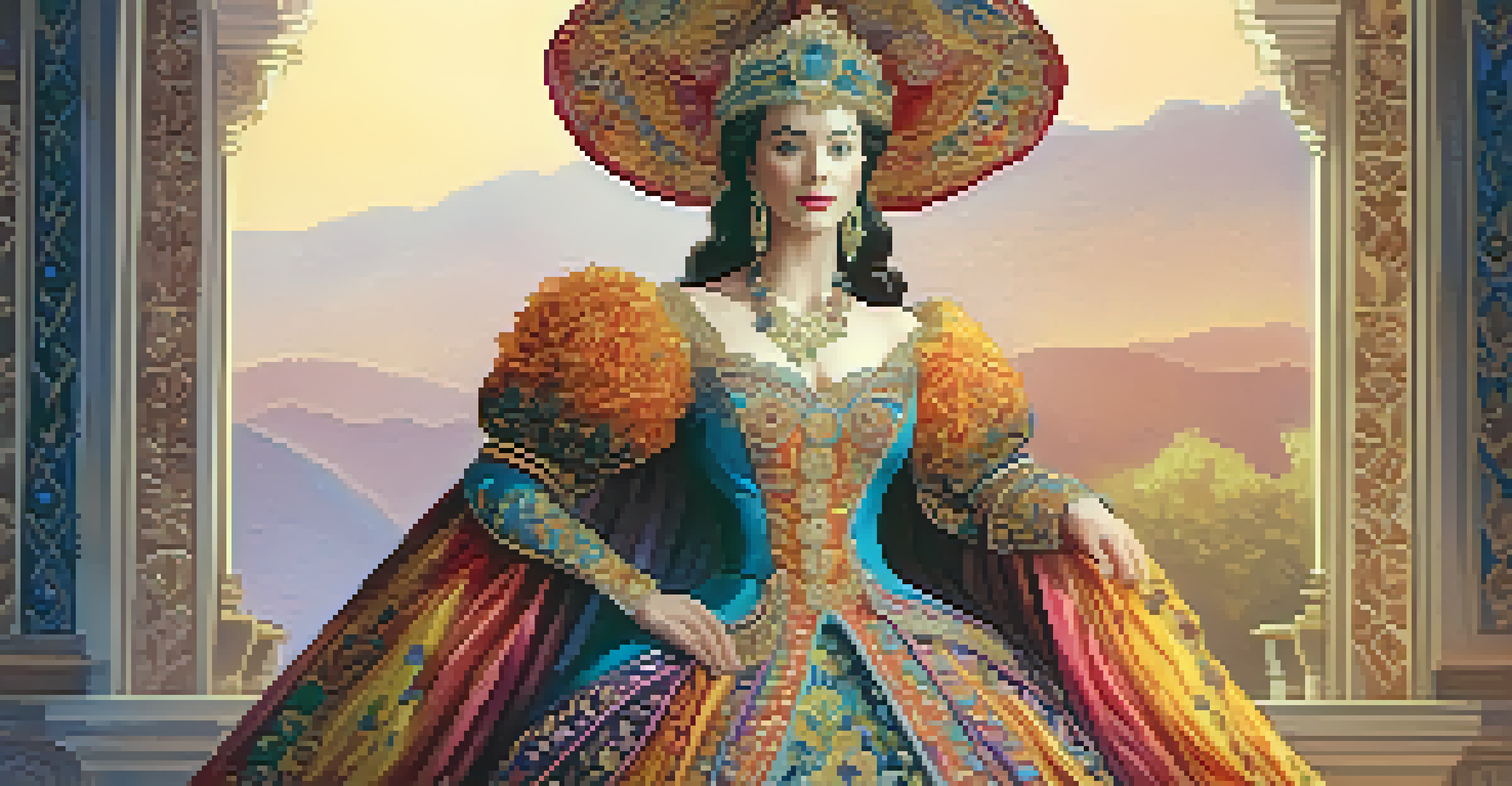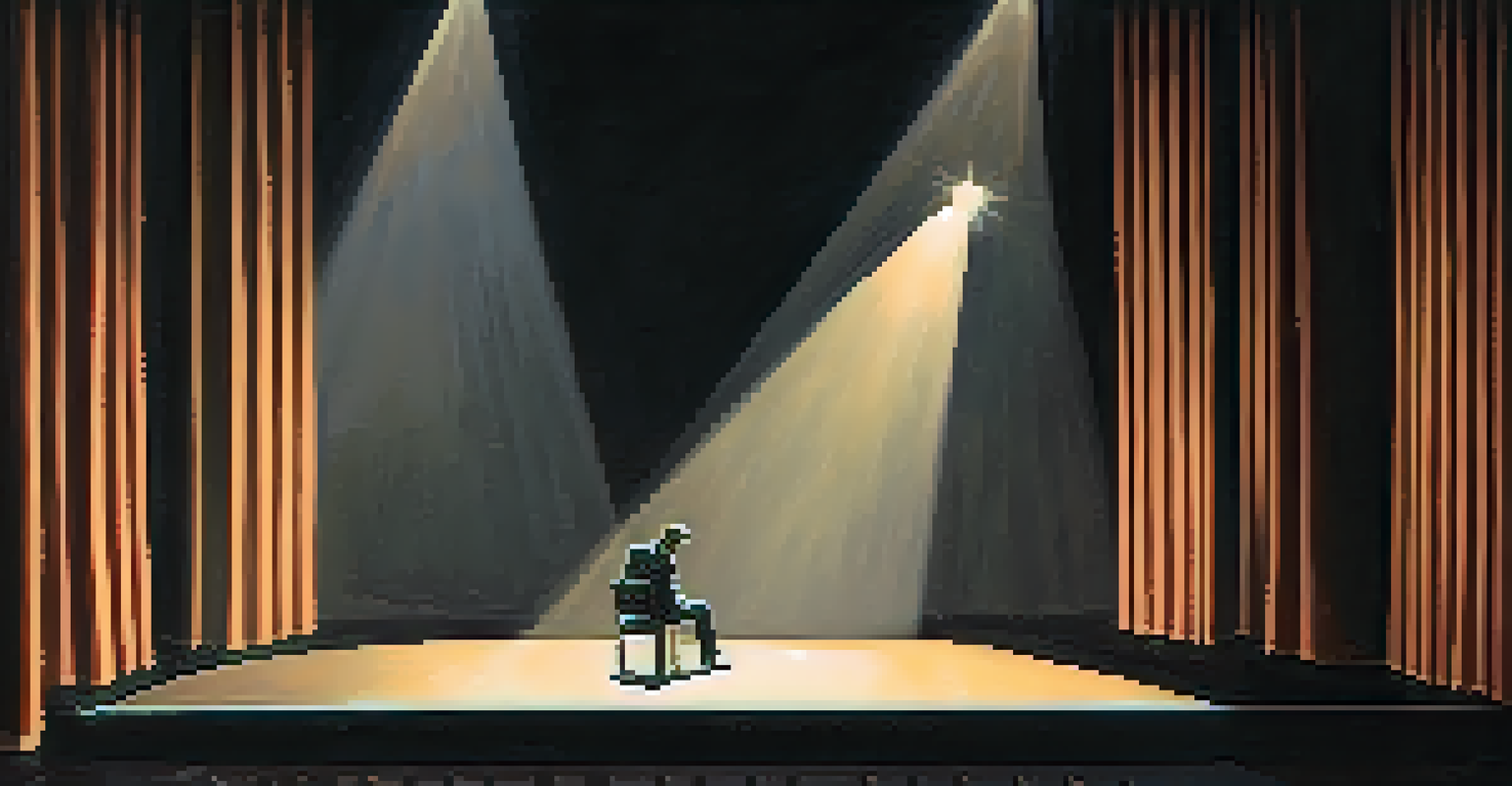From Canvas to Stage: The Impact of Visual Artists in Theater

The Intersection of Visual Art and Theater
The relationship between visual art and theater has a rich history, often intertwined in ways that enhance storytelling. Visual artists bring their unique perspectives to stage productions, transforming scripts into vibrant visual narratives. This synergy creates a more immersive experience for audiences, allowing them to feel the emotions conveyed not just through dialogue, but through stunning visuals.
The stage is not merely a backdrop for the actors; it is a living, breathing character in its own right.
For instance, consider how set design can influence the mood of a play. A dark, cramped set can evoke feelings of tension and claustrophobia, while an open, bright space can suggest freedom and hope. These visual choices, made by artists, play a crucial role in guiding the audience's emotional response throughout the performance.
Moreover, the collaboration between visual artists and theater companies is often a creative dance. Artists and directors work together to translate the essence of a story into tangible elements, proving that theater is not just about acting, but about a holistic visual experience.
Set Design: Crafting the World of the Play
Set design is perhaps the most visible contribution that visual artists make to theater. It involves creating the physical environment where the story unfolds, setting the tone and context for the characters. A well-designed set can transport the audience to another time and place, immersing them in the narrative.

Take, for example, the elaborate sets seen in productions like 'Hamilton' or 'The Lion King.' Each element, from the backdrop to the props, is meticulously crafted to enhance the storytelling. The set becomes an essential character in its own right, influencing how the audience perceives the unfolding drama.
Visual Arts Enhance Storytelling
The collaboration between visual artists and theater brings scripts to life through immersive visuals that deepen audience engagement.
Furthermore, the art of set design is not just about aesthetics; it's also about functionality. Designers must consider how the set will support the actors' movements and the overall flow of the performance, creating a seamless blend of art and practicality.
Costume Design: Dressing the Characters Creatively
Costume design plays a pivotal role in defining characters and their journeys. Visual artists in this field study the script, character backgrounds, and historical contexts to create outfits that reflect the essence of each role. The right costume can tell the audience a lot about a character even before they say a word.
Costume design is the visual language of a character, speaking volumes before they utter a single word.
For instance, in Shakespeare's 'A Midsummer Night's Dream,' the whimsical and colorful costumes help establish the play's fantastical elements. These visual cues not only enhance the storytelling but also help actors embody their roles more fully, creating a richer performance.
Moreover, costume design often involves intricate details, from fabrics to accessories, that can symbolize deeper themes within the play. This attention to detail allows audiences to connect with the characters on a more profound level, making the overall experience more impactful.
Lighting Design: Painting with Light
Lighting design is another vital aspect of theater that visual artists masterfully manipulate. It sets the mood, highlights emotions, and directs the audience's focus. A well-executed lighting design can turn a simple scene into a dramatic spectacle, enhancing the storytelling immensely.
For example, consider how a sudden spotlight can create an intense moment of revelation or how soft, warm lighting can evoke nostalgia. These decisions by lighting designers are crucial in shaping how the audience perceives the unfolding action and its emotional weight.
Set and Costume Design Matter
Thoughtfully crafted set and costume designs not only establish the mood and context of a play but also help define characters and their journeys.
Additionally, lighting can also serve practical purposes, guiding actors and audiences alike through different scenes and transitions. It’s an art form that demands both creativity and technical skill, making it an indispensable part of theatrical productions.
Visual Artists as Collaborators in Theater
Visual artists often work closely with directors, choreographers, and actors, making collaboration a cornerstone of successful theater productions. This teamwork ensures that everyone is aligned with the creative vision, fostering a cohesive atmosphere. The result is a production that feels unified and well thought out, as each element complements the others.
A great example of this collaboration can be seen in large-scale productions where visual artists contribute to everything from set and costume design to promotional materials. This holistic approach not only strengthens the visual identity of the production but also enhances the overall audience experience.
Moreover, workshops and brainstorming sessions between artists and theater professionals can lead to innovative ideas and fresh concepts. This collaborative spirit pushes the boundaries of traditional theater, allowing for unique interpretations and new artistic expressions.
The Evolution of Visual Art in Modern Theater
As theater continues to evolve, so does the role of visual artists within it. Modern technology, such as projection mapping and digital art, has opened new avenues for creativity, allowing for dynamic and immersive experiences. This evolution has redefined the traditional boundaries of theater, merging various art forms in exciting ways.
For instance, productions like 'The Curious Incident of the Dog in the Night-Time' utilize multimedia elements to enhance storytelling. Creatively integrating technology allows visual artists to contribute in ways that were not possible before, expanding the visual narrative and engaging audiences on multiple levels.
Lighting Shapes Audience Experience
Effective lighting design is crucial in directing audience focus and evoking emotions, transforming simple scenes into compelling theatrical moments.
Furthermore, the rise of virtual and augmented reality in theater is pushing visual artists to think outside the box. These advancements present new challenges and opportunities, requiring a blend of artistic vision and technical expertise to create truly groundbreaking experiences.
The Impact of Visual Arts on Audience Engagement
The influence of visual artists in theater extends beyond the stage; it profoundly impacts audience engagement. Stunning visuals can captivate viewers, drawing them into the narrative and making them feel part of the action. This engagement is crucial in today's fast-paced world, where attention spans are shorter than ever.
For example, a visually striking production can leave a lasting impression, encouraging discussions and reflections long after the curtain falls. Audiences may find themselves inspired, moved, or even challenged by the artistic choices made, fostering a deeper connection with the performance.

Moreover, the integration of visual arts can attract diverse audiences, appealing to those who may not traditionally engage with theater. By highlighting the artistic elements, theater becomes more accessible and relatable, broadening its reach and impact.
Celebrating the Contribution of Visual Artists
In conclusion, the impact of visual artists in theater is undeniable. Their contributions shape not only the aesthetic of a production but also its emotional resonance and overall effectiveness. Celebrating their work is essential, as it enriches our cultural landscape and enhances our understanding of the art form.
The collaborative efforts between visual artists and theater professionals create a vibrant tapestry of creativity that captivates and inspires. As audiences, recognizing and appreciating these contributions can deepen our experience and connection to the performances we witness.
Ultimately, the journey from canvas to stage is a testament to the power of collaboration and creativity. By embracing the role of visual artists, theater continues to evolve and thrive, offering audiences unforgettable experiences that linger long after the final bow.